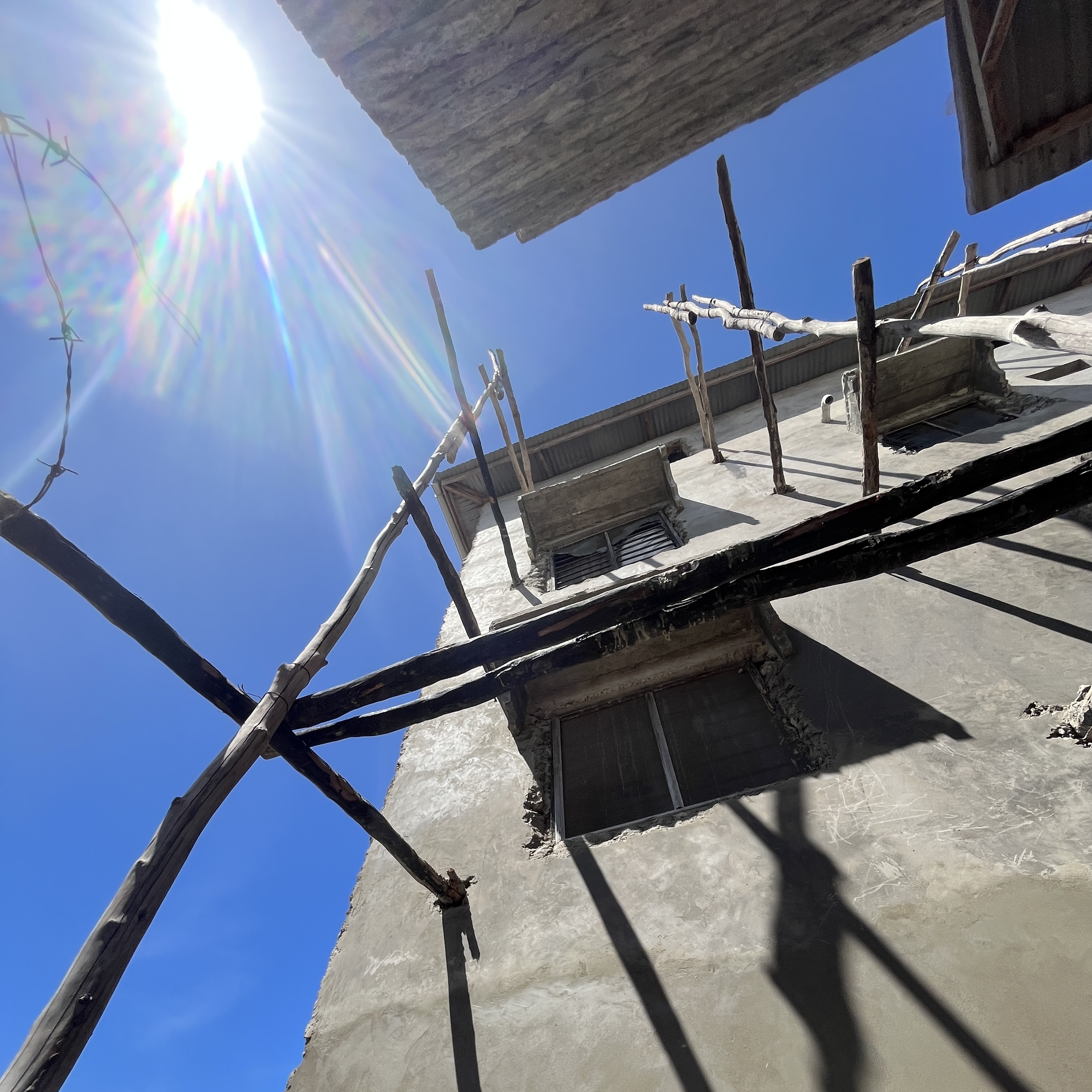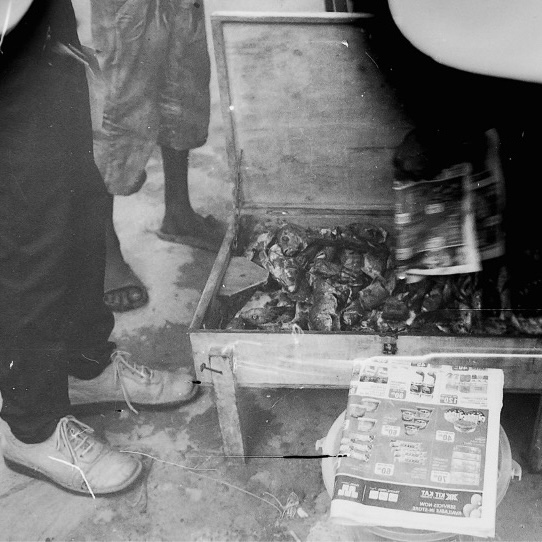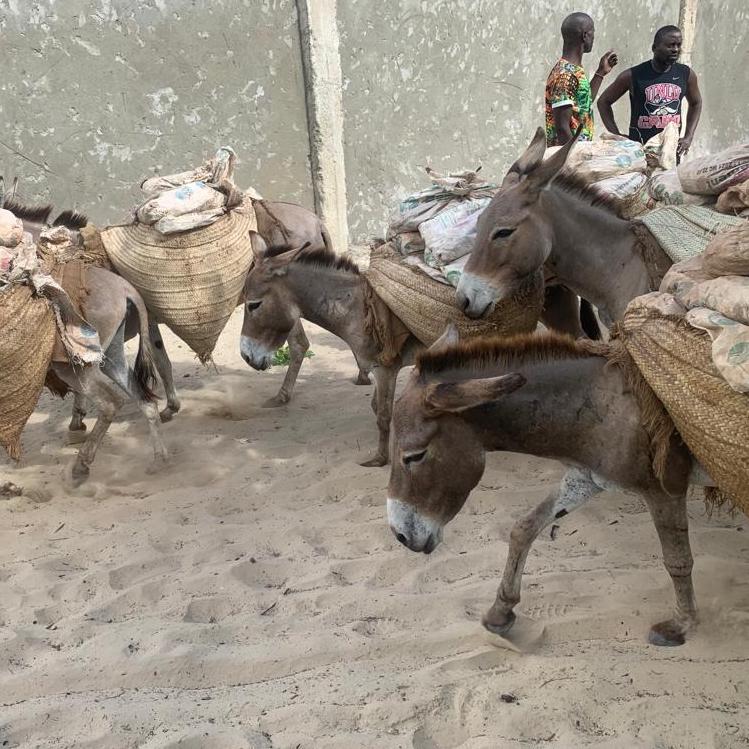The Space Between Work and Prayer
Where do working Muslim women pray outside the domestic space? And how do their prayer practices manifest spatially in Lamu?
Authors:
Nusrat Ahmed Ali
Khadija Bwanahamisi
Muanamkuu Salim Bake Ali
Samira Muster
Mara Pepine
Times are changing in Lamu. One of these changes is that women increasingly work outside of their homes. Islam teaches that it is most rewarding for a woman to pray at home and traditionally, Lamu women have largely stayed inside the home. But this does not apply to everyone. Nowadays, an increasing number of Muslim women play an active part in the economic life of the city. So, when the adhan is heard from all directions in Lamu town and their male colleagues go to the mosques to pray, where do these women go?
Our investigation also revealed how the different levels of assertiveness and claim-making on the part of the Muslim working women result in a variety of spaces being made available for prayer – from the storage cupboard to the female mosque. By exploring these spaces, we uncovered underlying connections between gender, culture, faith, labor conditions, and the spatial expansion of Lamu Town.
Taking ablution in the Women’s Mosque
As an all-women research team, we were able to explore how these Muslim women assert their presence in the city through newly emerging places of prayer and how the female embodied practice of Islam enables working Muslim women to shape and in turn be shaped by the spaces they inhabit.
Entrance to Raudha Women’s Mosque
Projects
The Space Between Work and Prayer #2505
Culture, Religion, and the Question of Space
When investigating the topic of working Muslim women in Lamu, questions surrounding the lack of female mosques were answered time and time again with one word: “culture.” What is culture? And how is it different from religion? These are the questions on which I have built the theoretical framework that underpins my exploration of female religious practices outside of domestic space in Lamu Town.
![]()
“Most women in Lamu are not used to going to the mosques because of the culture”
– Abubakar & Hassan,
imams
imams
“We’re fighting with culture and religion.”
– Raya Famau, LWA
(in regards to women
empowerment)
(in regards to women
empowerment)
“Swahili people (women) do not use the mosque for prayer”
– Usthada Asya, teacher and radio moderator (regarding Swahili culture)
Due to an unstable and declining economy on the one hand, and a higher level of education on the other, more and more Muslim women are joining the workforce. In anticipation of the mega infrastructural project LAPSSET, the town is expanding, both in size and population. In this context, for many working Muslim women, praying at home is no longer a viable option.
Theoretical Framework
The theoretical framework I am using lies at the intersection of three concepts: heshima, embodied piety, and respectability politics. In the Lamu context, heshima is of vital importance; literally “respectability” in Swahili, it represents the unspoken moral code that runs through the Swahili community. Theorized by the anthropologist Sarah Hillewaert as a “relational and performative network” (a system of behavior codes that apply to one’s role in the community and the mutual relationships between members), heshima relies heavily on Islamic values and morals, without, however, being one of the teachings of Islam. The way heshima functions in the Lamu context is very reminiscent of “respectability politics.” This concept, theorized by Evelyn B. Higginbotham in the U.S. context of African-American women and adapted to an African feminist perspective by Sylvia Tamale, refers to the strategies used by women to attain legitimacy in a patriarchal environment, by exercising social control over each other’s bodies and behavior.
In order to avoid the pitfalls of binary oppression-liberation narratives, I also introduce Saba Mahmoud’s concept of embodied piety. The anthropologist reframes agency not as resistance to norms, but as the ethical cultivation of the self through religious practices. Through this lens, the actions and choices undertaken by the women of Lamu in regards to their preferred spaces of prayer become proofs of agency and self-determination under the prevalent moral system, defined by the respectability politics of heshima.
![]()
Prayer and Spatial Negotiations:
Women’s Strategies in Daily Life
I apply this theoretical framework in order to reveal the socio-cultural reasons behind some of the more prevalent choices among Muslim working women in Lamu about where to pray. For instance, the choice to pray at home during lunch breaks has two underlying reasons: the Islamic prescription that teaches that women receive more spiritual rewards by praying at home and the more practical reason of having domestic responsibilities, like preparing lunch for the children.
This is where the spatial expansion of the town comes into play, as urban development becomes a hurdle in the most heshima-elevating prayer practices that working Muslim women can engage in. With longer distances and unreliable means of transportation, women can no longer easily go home on their lunch break to pray for dhuhr, the midday prayer. As such, they employ various strategies. Some visit the homes of relatives or friends that live closer to their place of employment, whereas others pray directly at their workplace, with a growing minority preferring to pray in the one accessible and adequate female mosque: Raudhwa Mosque.
The Role of Mosques
Generally, women pray in a mosque more often during Ramadan, as there are fewer domestic duties during the day, due to the fasting, which allows women to congregate en-masse in female mosques. Outside of Ramadan however, only one female mosque fulfills all the criteria to be properly used. In February 2025, Raudhwa Mosque opened its female section which, despite its small size, is bright, clean, and equipped with everything that women might need to fulfill their religious duties. It is also, as opposed to other mosques that have or have had a female section, conveniently located on the Seafront within walking distance from most workplaces that employ Muslim women. Raudhwa Mosque, however, is not perfect; most of the time it is locked and only a select few have a key and thus access to the building. Despite their popularization campaign, the mosque is still largely unknown by the women working within a radius larger than 100 meters.
The Culture-Religion Vicious Circle:
Why Women Don’t Pray in Mosques
The lack of female mosques in Lamu and the lack of visitors to those mosques reveals a vicious circle that proliferates at the intersection of religion and culture. Islam professes that it is more rewarding for a woman to pray at home and historically, most women did not leave the domestic space for prolonged periods of time. As such, it has become a part of the culture that women do not pray in mosques, which has been used as the reasoning behind the meager offering of female sections. The lack of appropriate space, in turn, makes women prefer the comfort and familiarity of their domestic space, further entrenching the idea that Muslim women in Lamu simply do not pray in mosques.
“Swahili people (women) do not use the mosque for prayer”
– Usthada Asya, teacher and radio moderator (regarding Swahili culture)
Improvised Sacredness:
Prayer in the Workplace
When praying outside of a domestic space, we can see women’s religious practices as a form of embodied piety, a way to express their agency in an environment that does not cater to them. Workplace prayer spaces are rarely institutionalized and thus often improvised. Offices, storage rooms, and the back rooms of shops take on a religious function through the act of prayer. However, these spaces, not being designed for such a function, are often lacking: too small, not clean enough, and occasionally without the proper ablution facilities. Regardless of their shortcomings, these improvised prayer spaces represent a way for women to appropriate and transform them in accordance with their religious needs, thus becoming an act of religious self-cultivation.
The Space Between Work and Prayer #2506
Gendered Contestations of Urban Space in Lamu, Kenya
Micropolitics of Prayer
Gendered Contestations of Urban Space in Lamu, Kenya
“How do Muslim working women’s prayer practices challenge the gendered cityscape of Lamu, fostering new female spaces of worship and increasing women’s presence in public areas?”
This research started from an interest in women’s spaces of prayer. While Muslim men usually pray five times a day at one of the 42 mosques in Lamu Town, Lamu’s Muslim women habitually pray in their homes. The recent increase in Muslim women engaging in non-domestic work is changing this. I was curious to first understand where the idea that women should pray at home comes from. From there, I was then trying to learn about these women's motivations for participation in the structural workforce and the changing needs that come with it. Lastly, I was looking at the way the practice of religion plays into this dynamic and the spatial manifestations of it.
In Swahili society, someone’s position in the social hierarchy used to be defined by their wealth, descent, and heshima (respectability). Having heshima is roughly defined by factors such as behaving respectfully and being a good Muslim. What that means in practice, though is constantly renegotiated amongst the members of Swahili society. An increased emphasis on heshima in the beginning of the last century led to the seclusion of women becoming a status symbol for the family. The effects of this practice had a substantial impact on the position of women in the public sphere, which is still palpable in Lamu today. Many places in town, especially the bigger streets, squares, the Seafront, and many workplaces, continue to be male-dominated, which leads women to either avoid them or navigate them with precaution. For a long time, women were also discouraged from pursuing higher education.
“Most women in Lamu are housewives. My mom didn't go to school. […]. In the past, Lamu girls didn't go to school, only the boys did. The common assumption was that the girl child is there for marriage. This was the culture.”
– Young Woman from Lamu
Today however, changes in Lamu’s economy and the rising level of education in women have led to their increased participation in the non-domestic workforce.
Working, for many of them, is much more than just a way to make money. It became clear to me that it is also a means to gain some independence and to open life paths beyond marriage and domestic duties. Through the insights of Belgian anthropologist Sarah Hillewaert’s study of Lamu’s youth, we also understand that these women see working, especially in NGOs and aid organisations, as contributing to development and therefore to the wellbeing of the town and its residents, contributing to their heshima.
At the same time, by joining the workforce, and with their increased presence in the streets and workplaces, Muslim women challenge the ever-present, unwritten rules of heshima. However, religion remains central in many of their lives, contradicting a western view of secularisation as a liberating element. For most of the women we spoke to, there was no doubt that they would continue their salat (the practice of their five daily prayers) when working. Scholars like John R. Bowen describe the Muslim daily prayers as one of the most visible aspects through which Muslims distinguish themselves from other religions, but also from one another and their varying degrees of religious observance. It therefore comes as no surprise that women in Lamu also employ their own religiosity to show that a practicing Muslim, a person with heshima, can also come in the form of a working woman.
![]()
A prayer room inside an office
The increased participation of Muslim women in Lamu's formal workforce is not merely an economic shift but a transformation of the city's social and spatial dynamics. As these women navigate the complexities of work and religious observance, they challenge traditional norms of heshima and redefine the gendered nature of public spaces. Their commitment to maintaining their daily prayers while engaging in non-domestic work emphasises the intricate relationship between gender, religion, and urban space. Through their everyday practices, these women are not only asserting their place in the city but also reshaping its urban fabric. The creation of new prayer spaces, from ad-hoc solutions to dedicated women's mosques, materializes their evolving needs and aspirations. My research highlights the importance of acknowledging and adapting to these transformations to cultivate more inclusive and equitable urban environments. The “micropolitics of prayer” utilized by these women stand as a compelling illustration of their agency and determination, embodying the continuous evolution of societal norms within Swahili society.
![]()
Outside Raudha Women’s Mosque
At the same time, by joining the workforce, and with their increased presence in the streets and workplaces, Muslim women challenge the ever-present, unwritten rules of heshima. However, religion remains central in many of their lives, contradicting a western view of secularisation as a liberating element. For most of the women we spoke to, there was no doubt that they would continue their salat (the practice of their five daily prayers) when working. Scholars like John R. Bowen describe the Muslim daily prayers as one of the most visible aspects through which Muslims distinguish themselves from other religions, but also from one another and their varying degrees of religious observance. It therefore comes as no surprise that women in Lamu also employ their own religiosity to show that a practicing Muslim, a person with heshima, can also come in the form of a working woman.
A prayer room inside an office
The increased participation of Muslim women in Lamu's formal workforce is not merely an economic shift but a transformation of the city's social and spatial dynamics. As these women navigate the complexities of work and religious observance, they challenge traditional norms of heshima and redefine the gendered nature of public spaces. Their commitment to maintaining their daily prayers while engaging in non-domestic work emphasises the intricate relationship between gender, religion, and urban space. Through their everyday practices, these women are not only asserting their place in the city but also reshaping its urban fabric. The creation of new prayer spaces, from ad-hoc solutions to dedicated women's mosques, materializes their evolving needs and aspirations. My research highlights the importance of acknowledging and adapting to these transformations to cultivate more inclusive and equitable urban environments. The “micropolitics of prayer” utilized by these women stand as a compelling illustration of their agency and determination, embodying the continuous evolution of societal norms within Swahili society.
“The opening of the women’s Mosque made me feel seen.”
– Working woman regularly praying at Raudha
Outside Raudha Women’s Mosque
Lamu’s Mkunguni Square
While some women go back to their homes at prayer time, through Lamu’s growing spatial expansion and the further distances, this is not always possible anymore, which leads to a new need for prayer places for women close to their workplaces.
I read the women’s everyday practices of working and especially praying in the city as acts of “micropolitics,” a term first coined by French philosopher Michel de Certeau in 1984, and taken up by Yasminah Beebeejaun, Professor for Urban Planning from the University College London. She appeals to planners to pay attention to women’s everyday actions and read them as acts of ‘micropolitics,’ to inform their planning and create more just cities for all genders. In the context of Lamu and other cities of the Global South, where the role of planning is distinctly different from a Western context, I argue that women’s ‘micropolitics of prayer’ negotiate symbolic but also physical space with the community and religious leaders. From small ad-hoc prayer spaces like a storage cupboard to more institutionalised spaces like the mosque dedicated to women, the material impact of this negotiation is manifold. The most prominent form of it is certainly the new creation of a mosque just for women, which enjoys great popularity amongst working Muslim women, but also serves travelling women as a temporary refuge in a city where there are not many other public spaces dedicated to women.

Inside Raudha Women’s Mosque











